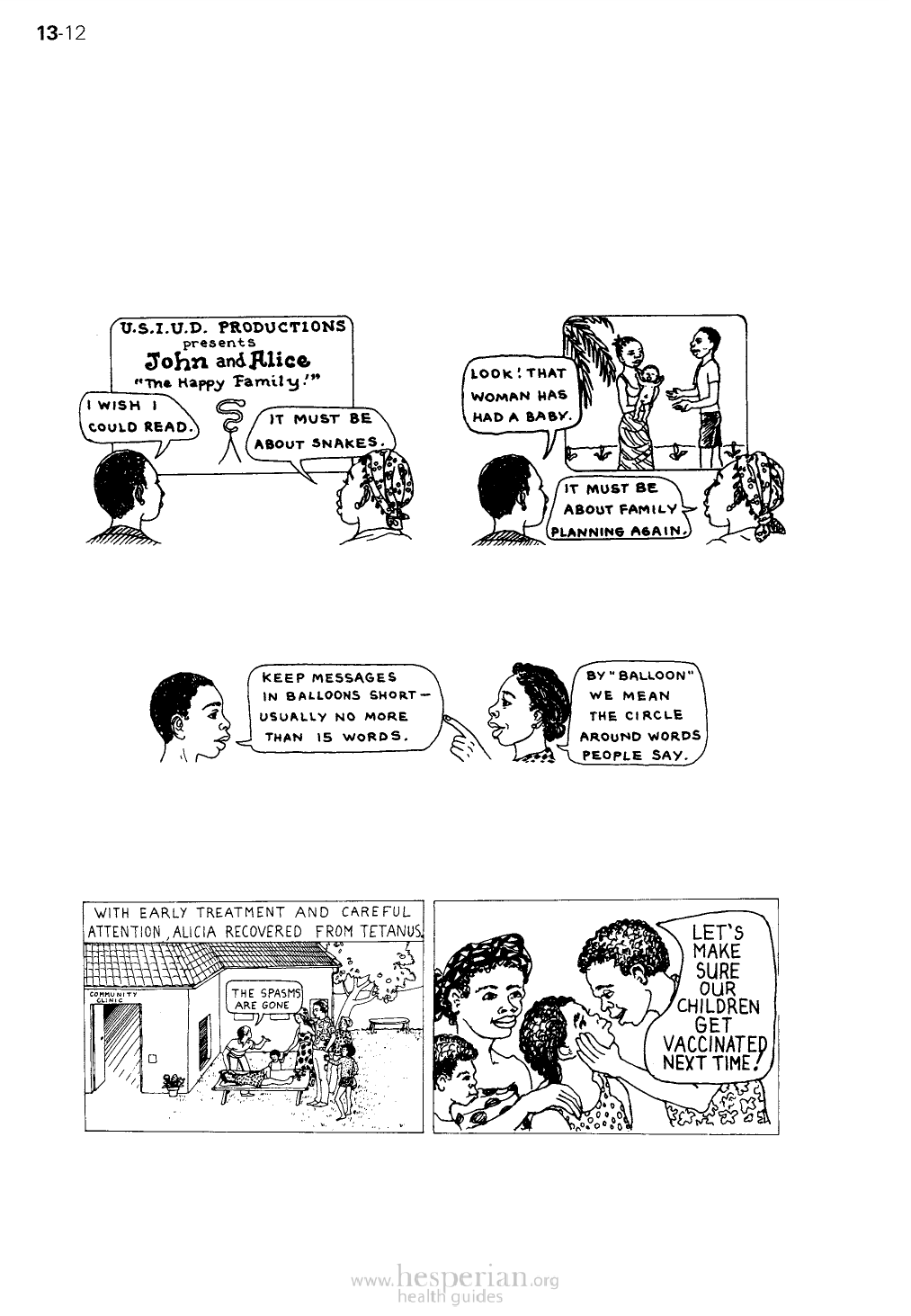
13-12
SUGGESTIONS FOR TEACHING WITH PICTURE STORIES
(flash cards, flip charts, comic strips, photonovels, or computer presentations)
• Keep the story simple and clear. Make one or two main points.
• Be sure that both pictures and words relate to the lives of the local people.
• Make every effort to respect and build on local traditions.
• Make the first picture one the audience will understand. If most of the viewers
cannot read, start with pictures, not written words.
LESS APPROPRIATE
MORE APPROPRIATE
• Each picture should tell a story, or carry the story forward.
• Keep the pictures simple, so that the main message comes through clearly.
• Avoid complicated details. But make things look as real as possible—especially
the people.
• Use some pictures that show the whole scene, but also include plenty of
close-up scenes. Close-ups are good for emphasizing important ideas because
they usually move people emotionally.
WHOLE SCENE
CLOSE-UP SCENE
• Use color if possible—but make colors as natural as you can.
• Make the story interesting. Try to include situations of happiness, sadness,
excitement, courage, serious thought, decisions, and action to solve problems.
• For slides, or flip charts, it is usually a good idea to provide a written guide for
the user. (For an example, see page 11-23.)